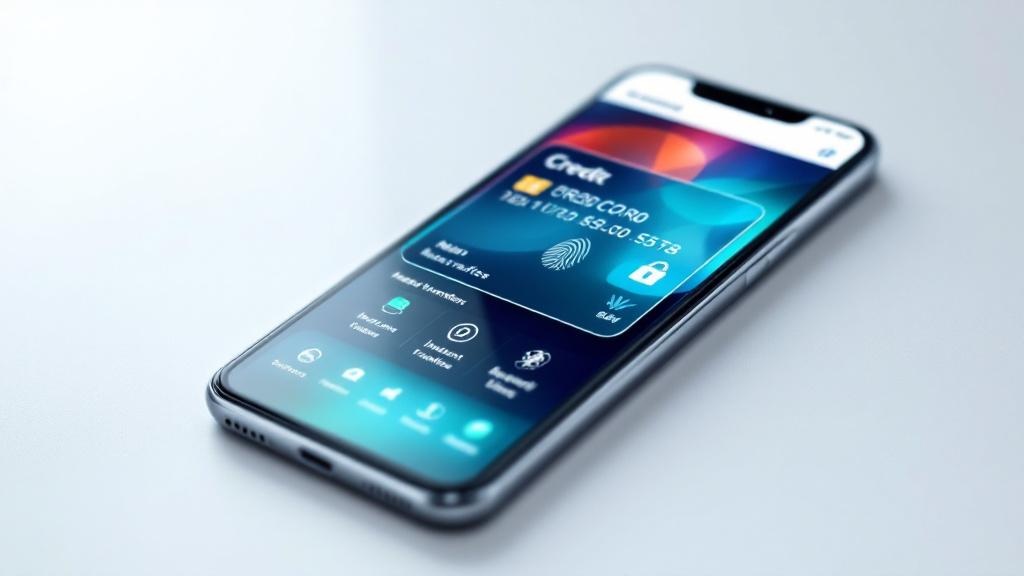Mobile banking has transformed the way we handle our finances, providing convenience, efficiency, and a suite of features that make managing money easier than ever. Among the many innovations in digital banking, mobile banking credit cards have gained significant traction. They offer an easy, fast, and secure way to track and manage your spending, all from the palm of your hand.
In this blog post, we’ll dive into the pros and cons of mobile banking, explore its benefits and drawbacks, and discuss everything you need to know about how mobile banking credit cards can help you manage your finances with confidence.
The Rise of Mobile Banking: A Game-Changer in Personal Finance
The Evolution of Banking: From Traditional to Mobile
Gone are the days of visiting the bank in person to check balances or transfer money. With the advent of digital banking services and mobile banking apps, everything we need to manage our accounts is now available in the palm of our hands. Whether you’re paying bills, transferring funds, or applying for a mobile banking credit card, mobile banking brings banking directly to your smartphone.
Key Features of Mobile Banking
Mobile banking isn’t just about checking your balance. It includes a wide range of mobile banking features designed to make your financial life simpler:
Mobile wallet services: Pay with your phone, securely store payment methods, and link your mobile banking credit card for a seamless experience.
Instant transfers: Send money to friends, family, or even businesses with instant transfers that make paying for goods and services incredibly convenient.
Bank apps for smartphones: Specialized apps that allow users to handle virtually all banking tasks, from checking accounts to securing loans.
These features are powered by cutting-edge technology and offer significant mobile banking benefits that weren’t possible with traditional banking.
Pros and Cons of Mobile Banking: What You Need to Know
Pros of Mobile Banking
Convenience
One of the most notable advantages of mobile banking is the convenience it offers. Whether you’re at home, at work, or traveling, you can access your account anytime, anywhere, and manage your finances with just a few taps.Instant Transactions
Traditional banking might take hours or even days for transactions to clear. With mobile banking, instant transfers allow you to complete transactions in real-time. Whether you’re sending money to a friend or paying for goods, the convenience of mobile payment systems cannot be overstated.24/7 Accessibility
Unlike banks that close at certain times, mobile banking accessibility means you can manage your account at any hour of the day or night. Whether it’s 2 AM or noon, you can check your balances, transfer funds, or even apply for mobile banking credit cards.Better Spending Control
By offering real-time alerts and transaction tracking, mobile banking allows you to manage spending with greater confidence. For example, many mobile banking apps allow you to set spending limits or receive notifications whenever you make a purchase, helping to keep you on budget.Mobile Banking Security Features
The technology behind mobile banking is constantly evolving to ensure your data remains safe. With mobile banking security features like encryption, two-factor authentication, and biometric login options (fingerprint or facial recognition), your information is protected from unauthorized access.
Cons of Mobile Banking
Security Risks
As with all digital platforms, there are inherent mobile banking security risks. Hacking, phishing, and malware attacks are real threats that could compromise your data. While banks invest heavily in security measures, it’s still important to practice caution, such as avoiding unsecured Wi-Fi networks when conducting banking transactions.Privacy Concerns
Mobile banking privacy concerns revolve around how personal information is stored, used, and shared. Although many apps comply with strict privacy regulations, there’s always the risk that your data could be compromised if the app or bank isn’t using secure methods to protect it.Technical Glitches
While mobile banking apps are generally reliable, technical glitches can happen. Server downtime, app crashes, or connectivity issues could prevent you from accessing your accounts when needed. This can be frustrating, especially in emergencies.Limitations on Transactions
Although mobile banking vs traditional banking offers plenty of benefits, some banks limit the amount of money you can transfer or withdraw at a time through their mobile app. This can be an inconvenience for individuals who frequently make large transactions.
Mobile Banking vs Traditional Banking: A Comparison
Speed and Efficiency
Traditional banking often involves waiting in line or filling out forms. On the other hand, mobile banking is all about speed and efficiency. Transactions happen in real time, so you don’t have to wait for business hours to complete your banking tasks.
Accessibility and Convenience
With traditional banking, you must visit a branch or ATM to manage your finances. With mobile banking, everything you need is accessible through your smartphone. Whether you’re commuting or lounging at home, you have mobile banking convenience at your fingertips.
Security Features
Both mobile and traditional banking have robust security measures in place. However, with mobile banking security features such as two-factor authentication, biometric identification, and encryption, mobile banking can often provide an added layer of protection.
Is Mobile Banking Safe?
A common concern many people have is is mobile banking safe? The short answer is: yes, but it depends on how you use it. Mobile banking apps offer mobile banking security features designed to keep your information safe. However, users should take extra precautions by:
Using strong, unique passwords and enabling two-factor authentication
Avoiding public Wi-Fi networks when conducting financial transactions
Regularly updating your banking app to take advantage of the latest security features
By staying vigilant, you can enjoy the many mobile banking benefits without compromising your security.
Mobile Banking Credit Cards: The Future of Spending
Mobile banking credit cards are a relatively new feature, but they’re quickly becoming a favorite among consumers. They integrate with mobile wallet services like Google Pay or Apple Pay, allowing you to use your credit card information to make secure payments directly from your smartphone.
Key Features of Mobile Banking Credit Cards
Instant Payments: With mobile banking credit cards, you can complete purchases in seconds, simply by tapping your phone on a payment terminal.
Track Spending: The associated app allows you to track purchases, see spending patterns, and set spending limits in real-time, helping you stay within budget.
Security: Mobile banking credit cards come with additional layers of protection, including fraud detection and the ability to lock or freeze your card instantly if it’s lost or stolen.
Mobile Banking FAQs
1. What are the advantages of mobile banking?
Mobile banking offers numerous benefits, including convenience, instant transactions, 24/7 accessibility, and advanced security features to protect your data.
2. How do I prevent mobile banking scams?
To prevent mobile banking scams, always verify the source of any messages or emails claiming to be from your bank, use strong passwords, and enable two-factor authentication whenever possible.
3. What are the main mobile banking drawbacks?
Some mobile banking drawbacks include the potential for security risks, privacy concerns, and technical glitches that can prevent access to your account or transaction failure.
4. How does mobile banking compare to traditional banking?
Mobile banking vs traditional banking offers greater speed and accessibility, with fewer limitations and more security features, such as biometric authentication.
5. What are mobile payment systems?
Mobile payment systems allow you to make payments through your smartphone, using apps like Google Pay, Apple Pay, or Samsung Pay, often linked to your mobile banking credit card.
6. Is mobile banking safe for international transactions?
Yes, mobile banking security features can protect international transactions, but ensure you’re using secure networks and apps, and enable two-factor authentication for added safety.
7. How can I use mobile banking to track my spending?
Most mobile banking apps allow you to set spending limits, receive real-time alerts, and categorize transactions to help you monitor and control your finances.








Comments (0)